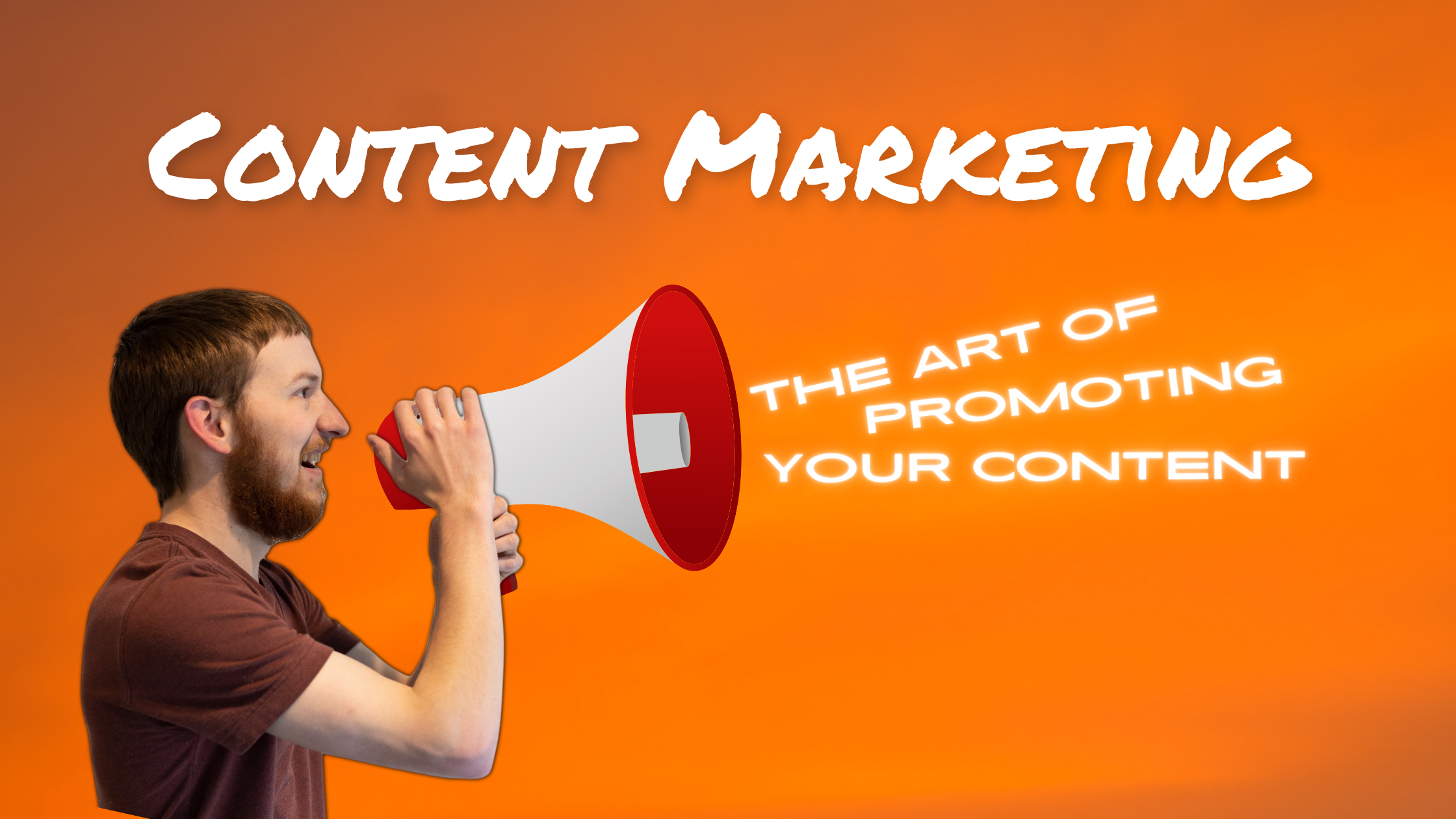Content Marketing: The Art of Promoting Your Content
Website built with no broken buttons or empty pages? Check.
Webpages, blogs, and videos with quality content? Check.
Lots of traffic converting to sales? Not so much….
You have taken two big steps by already getting your website established and filling it with quality content. Congratulations! That’s a big deal and you should be proud of yourself for successfully funding content production for your website.
But after all these efforts, it’s important for you to show a return on your investment. Looking at your website and not seeing a significant change in online traffic or a significant return on your investment can be incredibly frustrating.
However, there is a way that you can control this timeline and speed up the process with something called content marketing.
Generally, content marketing is a strategic approach for both creating and distributing content. This content can range from social media posts to blogs, web pages, podcasts, apps, press releases, print publications, and more. It requires you to consistently create valuable and relevant content for a clearly defined audience that will both attract and retain customers to ultimately drive profitable customer action.
Given that you are already creating content, the next step is to refine your distribution strategy. And what that means is making sure that you tell people about your content on multiple platforms. Think, creating content in a variety of formats on a variety of platforms. This could mean videos, graphics, images, written text, audio, or any combination of those! Ideally, you would be posting them on social media channels, your website, and other digital platforms. It’s important to remember print material as well, which may be relevant to your business.
As a marketer, I would tell you to get on as many platforms and create as much content as possible, but having worked with small businesses in the past, I know that pursuing that route can become a financial burden.
This is where really knowing your audience can help save you time, money, and effort in the future.
It’s generally good practice to look first to your audience to help narrow down your efforts to be more targeted. For example, if you are trying to sell surfboards, it makes more sense to consider how your customers might be using them. On the coastlines, they are likely to be used how we traditionally think of them—riding waves. However, if you want to target an underserved market of wakeboarders who live on lakes, consider how they might be used to wake surf behind a boat.
This new audience helps define geographic and some demographic information about the customer. Instead of individuals living near a beach, we are looking for lakes that allow motorboats with higher income individuals that can afford to own and maintain a boat. As for digital placement, you might consider looking at different Facebook Communities, Instagram hashtags, or websites for wakeboarders instead of surfers.
Once you have defined your audience clearly (click here to see a guide on how to go more in-depth in defining your audience than we did in this article), then you can start identifying the best platforms and start sharing your content.
Film a long-form video podcast on how you got started as a business, transcribe and post it as a blog to boost your search rankings, take quotes and create graphics, take screenshots to use on your website or social media, cut the videos into shorter form clips for YouTube, IGTV, TikToks, Reels, or YouTube Shorts. The possibilities are endless. Take your content, repurpose it and start spreading the news about all the great things your business is doing!
And if you need a hand on getting all of that planning, recording, and editing done, we are right here to help you out. Give Seth a call (907) 575-7384 or contact us by emailing contact@orangesliceak.com.

